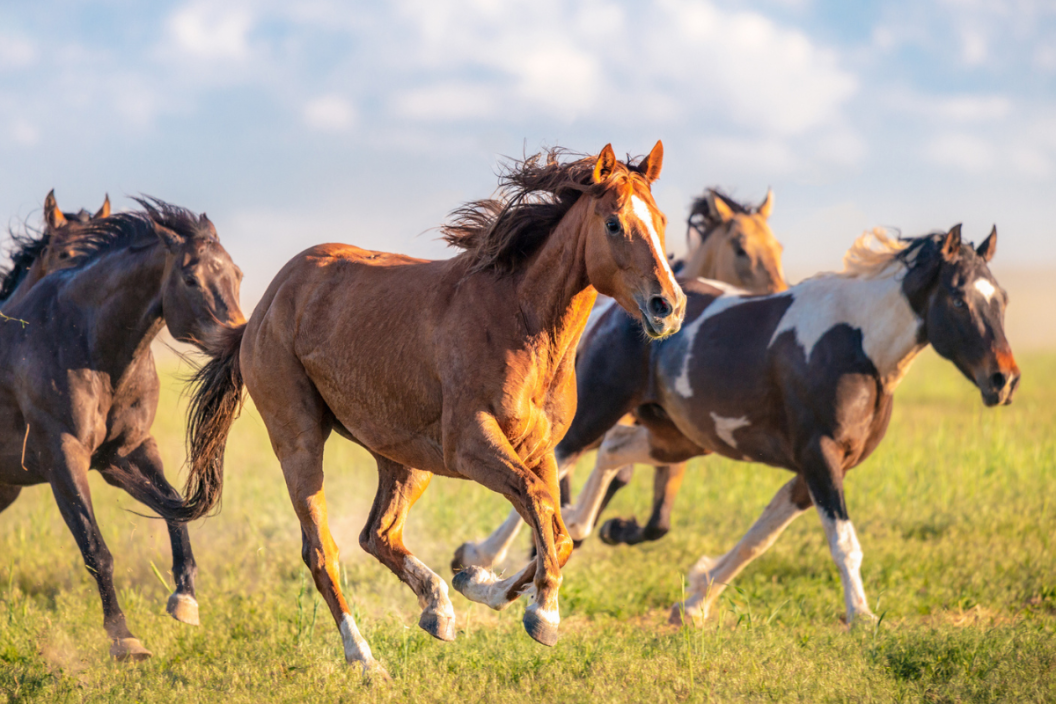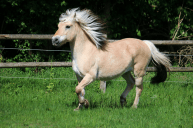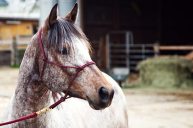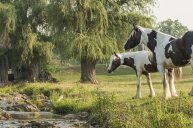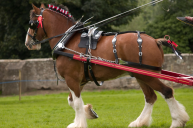First found only in North America, horses were brought back to Europe by Spanish colonists in the late 1400s. Now, these 'New World' natives can be found all over the world! It's estimated that horses were first domesticated by humans around 4000 BC, when wild horses became key cogs in transportation, hunting and working the lands inhabited by generation after generation of people. Over thousands of years, horses were bred for any and every purpose, resulting in a wide variety of shapes, colors, and sizes. With a tremendous amount of different horse breeds, the differences between some of their coat colors can be very subtle. Today, horses live and work in all parts of the world. Whether they're working in rural parts of the globe or training for equestrian competitions or horse racing like the Kentucky Derby, horses are as important a part of human society as ever.
Despite stiff and extensive competition, a number of popular horse breeds have risen the ranks and become consistent favorites among equestrian circles. Some of these equines are authentically 'American made', while others come from countries all across the globe. Several of these horses are highly sought after, and a colt may cost you a pretty penny, but horses are lifelong companions—and their company is sure to be well worth the price. Look over this lineup and you may find your new favorite foal among the popular ponies on this list.
1. Arabian

The Arabian horse has long been a favorite the world over. Hailing from the Arabian Peninsula, this breed is easy to spot with its distinctive head shape and high, proud tail carriage. It is thought to be one of the oldest breeds, and is known for its spirit and endurance. Arabians are used today in many disciplines, including western, saddle seat, and even dressage.
2. Quarter Horse
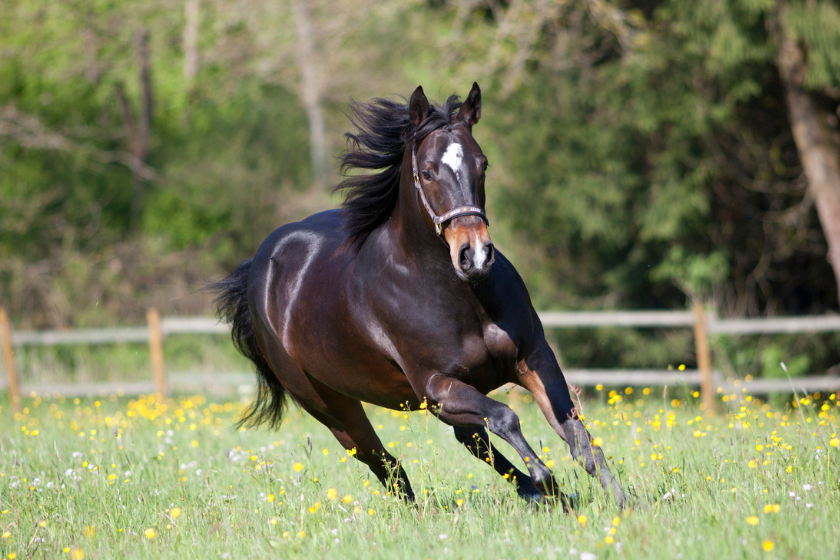
This American breed is arguably the most popular breed in the United States, and the American Quarter Horse Association is the largest breed registry in the world.
Known as the fastest breed of horse over short distances, the American quarter horse is a popular mount for both trails and competitions. They are often used for western pleasure riding and other western events such as barrel racing, roping, and cutting, but they can also make excellent hunt seat mounts and even racehorses.
3. Thoroughbred
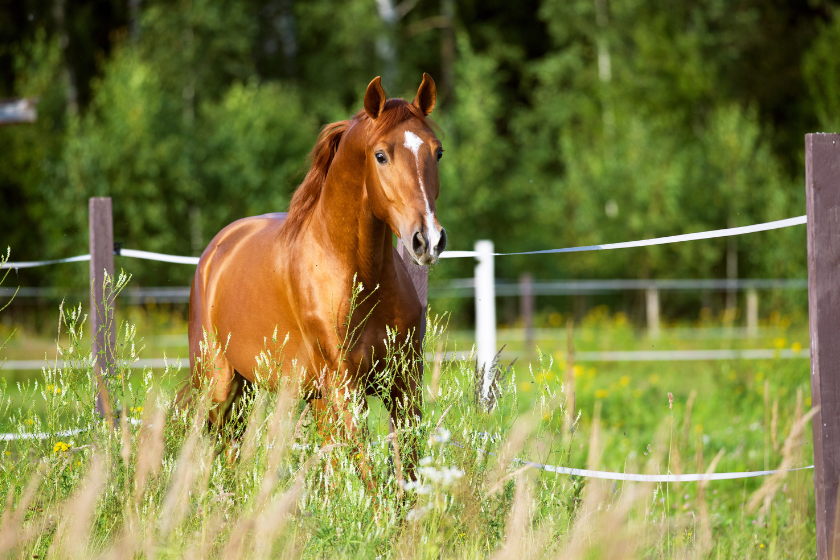
The Thoroughbred is best known for its use in horse racing. Developed in England in the 17th and 18th century, this breed is high spirited and known for its heart. They make excellent sport horses, and are used as hunters and jumpers, and as mounts for dressage, polo and fox hunting.
4. Tennessee Walker

The Tennessee walking horse is a gaited breed of horse that was developed in the Southern United States during the 18th century for use on farms and plantations. Its smooth gaits, such as the four-beat "running walk," make it comfortable for riding long distances, so it was the mount of choice for many Civil War generals. In fact, it is believed that Robert E. Lee's mount, Traveler, was part Tennessee walking horse.
Today, Tennessee walkers are used as both show horses and pleasure mounts.
5. Morgan
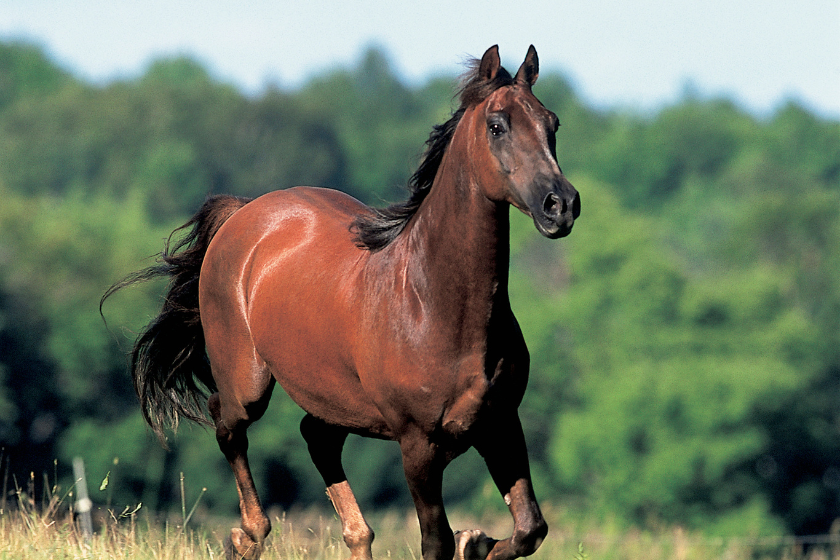
Compact, brave and agreeable, the Morgan horse is best known for its versatility. One of the oldest breeds developed in the United States, all Morgans trace back to the foundation sire, Figure. Small in stature but big in heart, they are used today as a riding horse and driving horses and excel in the western and saddle seat disciplines. The Morgan horse is also the state animal of Vermont.
6. Paint
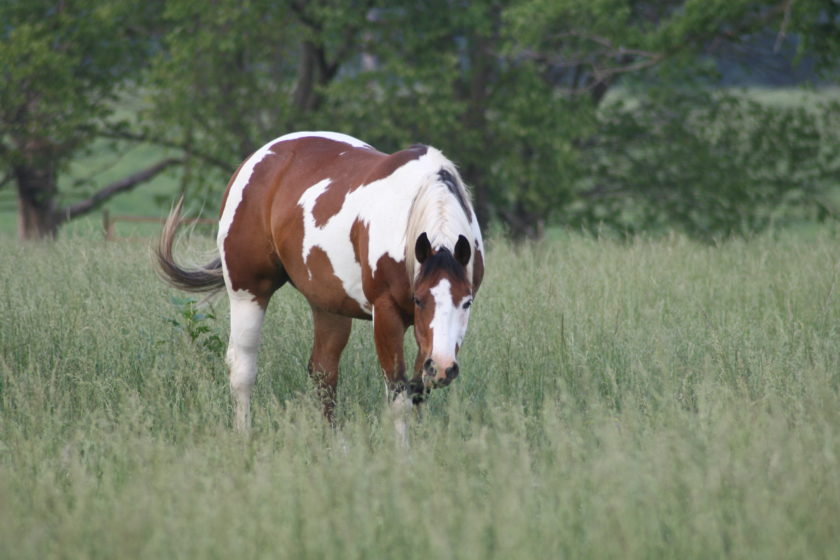
Easily manageable in a stable and pasture, the American paint horse is a unique combination of the conformational characteristics of the western stock horse and the colors of a pinto. While some people consider the paint a "color breed," the American Paint Horse Association considers them a true breed, as paints have a strict bloodline requirement and distinctive breed characteristics.
Like the Quarter horse, they excel in many western disciplines and are often used as pleasure mounts.
7. Appaloosa

When people picture the Wild West, an Appaloosa horse is assuredly one of the images that comes to mind. Developed by the Nez Perce Native American tribe in the Pacific Northwest, Appaloosa horses are best known for their colorful spotted coat pattern. They are tough, independent, hardy and sure-footed, with big bodies and sparse manes and tails. Appaloosas are often used as stock horses and pleasure mounts, and also make excellent trail horses.
8. Miniature Horse
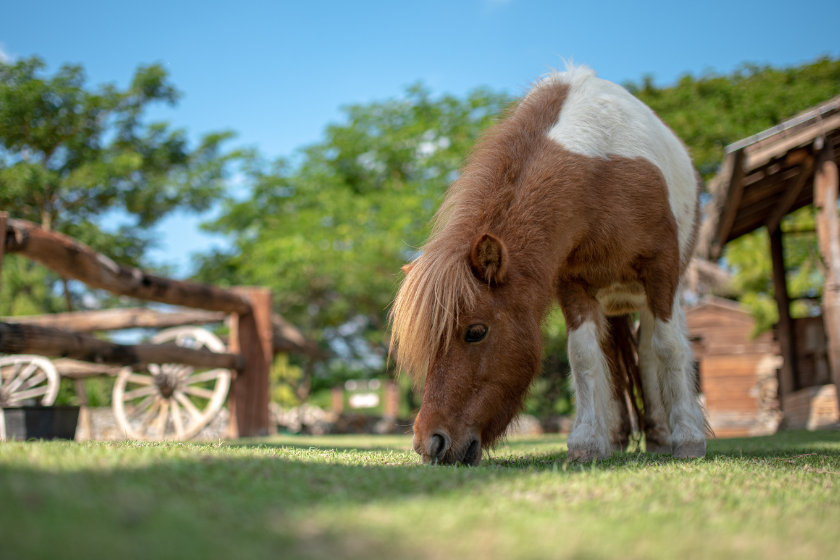
Miniature horses were developed in Europe in the 1600s. The breed's two registries have different height requirements, but the horses must fall under 34-38 inches, measured from the last hairs of the mane. While they are extremely small, they are considered horses and not ponies. In the past, the breed has been kept as pets by nobility and used for work in coal mines.
Today, they are used as driving horses and sometimes even as service animals and therapy horses.
9. Warmblood

Technically, Warmbloods are not a breed, but a group that encompasses a number of types and breeds, including the Hanoverian, Holsteiner, Oldenburg, and Trakhner. Warmbloods are characterized by open studbook policies and are known for their prowess as sport horses, excelling in jumping as well as dressage.
10. Andalusian

This Spanish breed originated in the Iberian Peninsula and was first recognized as a breed in the 15th century. It was known for its prowess as a war horse and prized by nobility. With long, thick manes and tails, the Andalusian is strong, compact and elegant. While in the past many different coat colors were found, most present-day Andalusians are grey or bay. Today, they are used for dressage, driving, saddle seat and even jumping.
11. Hackney
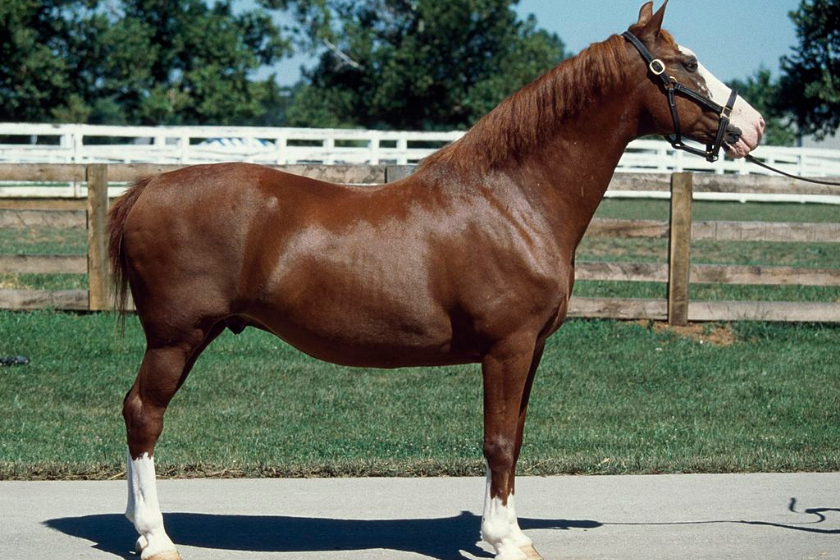
Hackney horses and ponies are prized show, riding, and driving equines. Hackneys are accepted in brown, black, bay, and chestnut colors. With small heads and ears and a refined body, Hackneys are known for their high-stepping gaits and general flashiness in the show ring.
12. Belgian Draft

Belgian draft horses typically weight around 2,000 pounds at their full weight, sporting relatively small heads compared to other breeds. Belgians are kind, easy to work with, and very trainable. In addition to pulling disciplines like plowing, carriage driving, and drawing sleighs, Belgians are increasingly used for riding, too.
13. Shetland Pony

Originating from Scotland, Shetland ponies evolved through harsh climates and limited food stores, giving today's ancestors a sturdy and compact build. Shetlands were prominent in agriculture, but eventually found their way below ground — "Pit ponies" were sent down into coal mines in the early 20th century to move heavy carts, putting Shetland ponies in unique but unsafe working conditions.
14. Gypsy Vanner 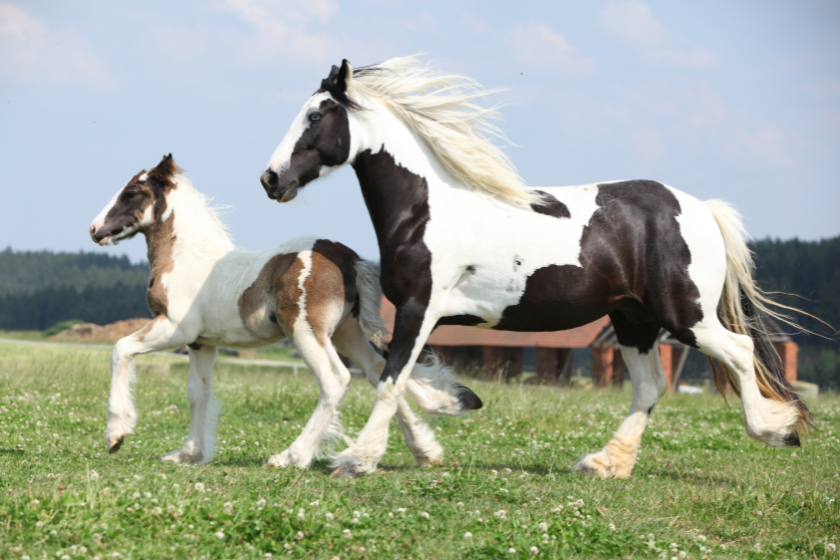
With long, flowing manes and elegant leg feathering the Gypsy Banner horse looks straight out of a fairytale. Also known as the Gypsy Cob, these British natives didn't receive its formal breed association until about the last 30 years. While Gypsy Vanners come in any coat color, most people recognize the tobiano coat colors. This breed is relatively new to the United States, with the first horses arriving in 1996. Though new, the Gypsy Vanner has quickly grown in popularity among equestrian circles and dressage-related events.
15. Friesian
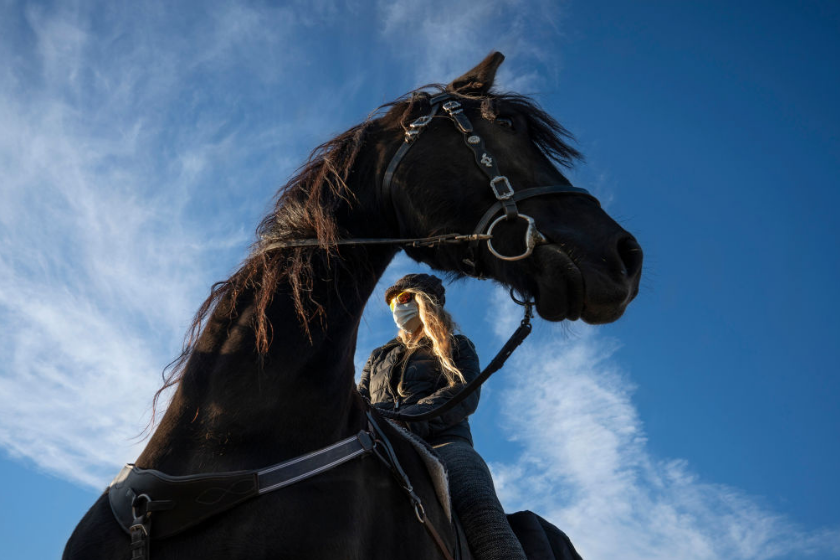
It's easy to recognize the visually striking Friesian horse. These horses were originally bred to encompass both bay and gray coat colors, but today, black is the only coat color officially accepted. Friesians are known for their long, flowing manes and tails and fetlock hair. These horses are suitable for many purposes, and you'll find many of them in the show ring. Friesians can be driven, ridden English and Western, jumped, schooled in dressage, and more.
16. Clydesdale

If you've ever marveled at the famous Budweiser Clydesdale commercials, then you're already familiar with this breed. The Clydesdale horse originated in Scotland around the 18th century, later being imported to the Unites States in the 1840s.
Clydesdales stand between 16.2 and 18 hands in height and can weigh as much as 2,200 pounds at the top end of the scale.
17. Standardbred
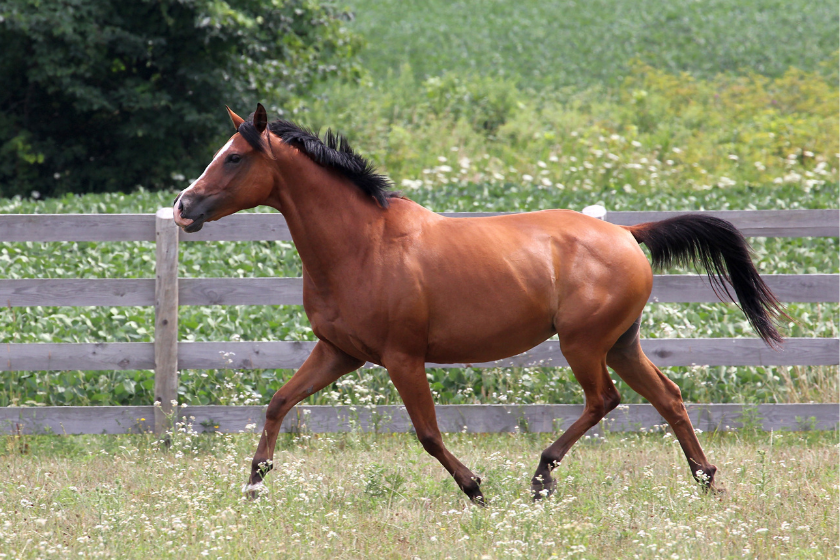
Today's Standardbred (as well as many Morgans) can trace its existence back to a single horse named Hambletonian 10. When the breed originated, these trotting horses were required to achieve a standard time for trotting a mile, which is how the breed earned its name. The Standardbred breed has existed for less than 200 years, but you'll find Standardbreds racing in many events; once retired, they're often retrained as pleasure or show mounts.
18. Haflinger
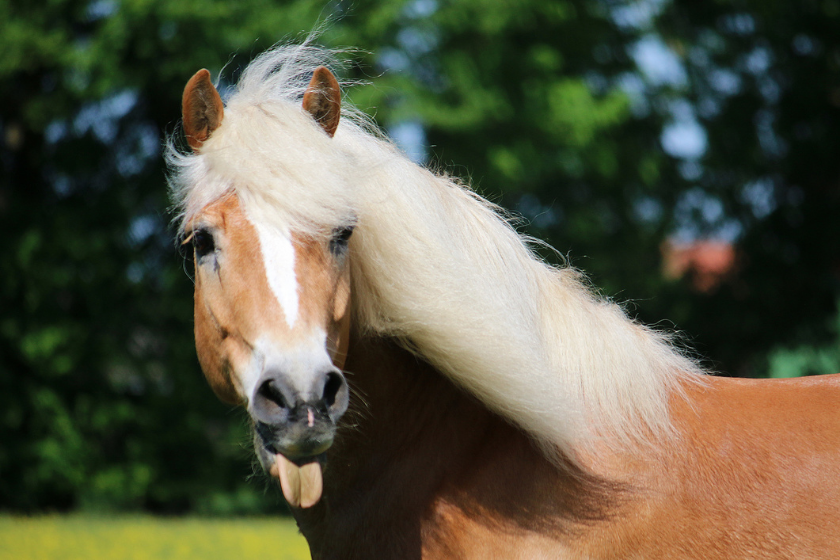
It's believed that Haflingers first originated in the Middle Ages around Austria and Italy. Haflingers are small yet hardy horses that are versatile enough to be both ridden and driven. They're known for their golden coloring and white manes and tails. Haflingers take on many different disciplines today, from Western dressage to eventing to driving.
19. Paso Fino
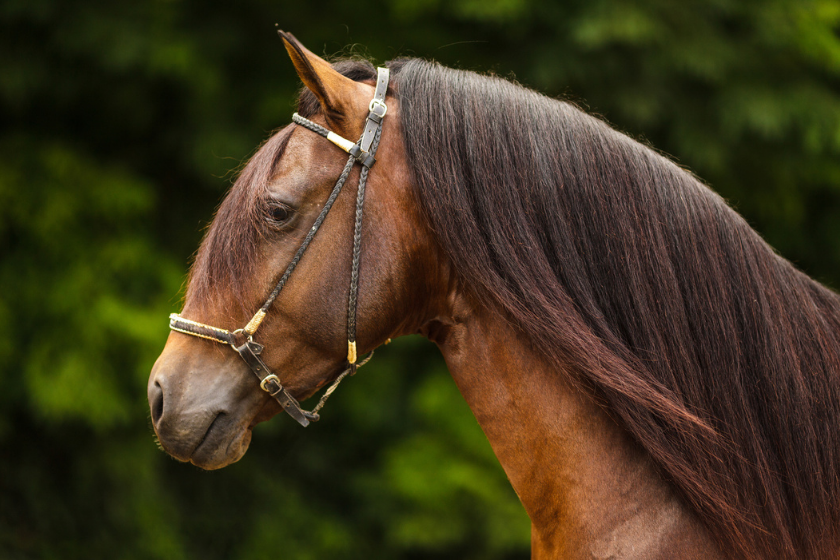
Quick, athletic, and equipped with incredible stamina, the Paso Fino is becoming a highly popular breed in America. They are sometimes referred to as one of the world's smoothest breeds because of its rhythmic, natural gaits that allows riders to sit in the saddle virtually without moving. Paso Finos come in various coat colors and often have long manes and tails.
20. Welsh Pony
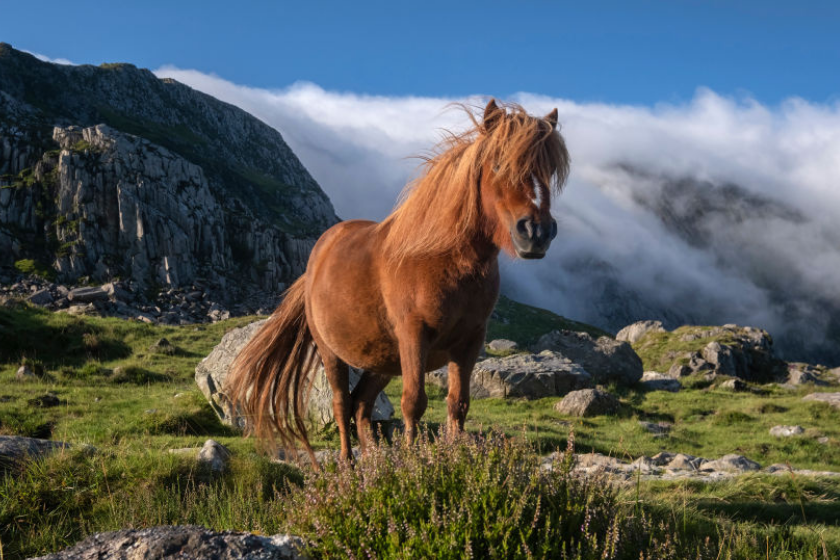
Welsh ponies are friendly, intelligent, and easy to train. Originally from southern Wales, Welsh ponies were imported to America in the 1880s and became the fastest-growing breed in the country in the later 1900s. These ponies are highly versatile, and you'll find them competing in nearly every discipline today.
The list of horse breeds is exhaustive, but these 20 are the most popular. Other popular breeds from wild horses to saddle horses include the Cleveland Bay, Dutch Warmblood, Australian Stock Horse, Akhal-Teke, Bashkir Curly, Barbs, Trakehner, Florida Cracke, Icelandic Horse, Fjord, Rocky Mountain Horse, Lusitano, Peruvian Paso, Palominos, and American Saddlebred. You'll find many draft breeds, including the Percheron and Shire. Popular ponies include the Chincoteague Pony, Dartmoor Pony, Exmoor Pony, Falabella, and Connemara Pony.
There is a good chance that the horses you see in paddocks along the road are one of these different breeds!
Do you own one of these popular horse breeds? Share your four legged friend on our Wide Open Media Pets Facebook page!
